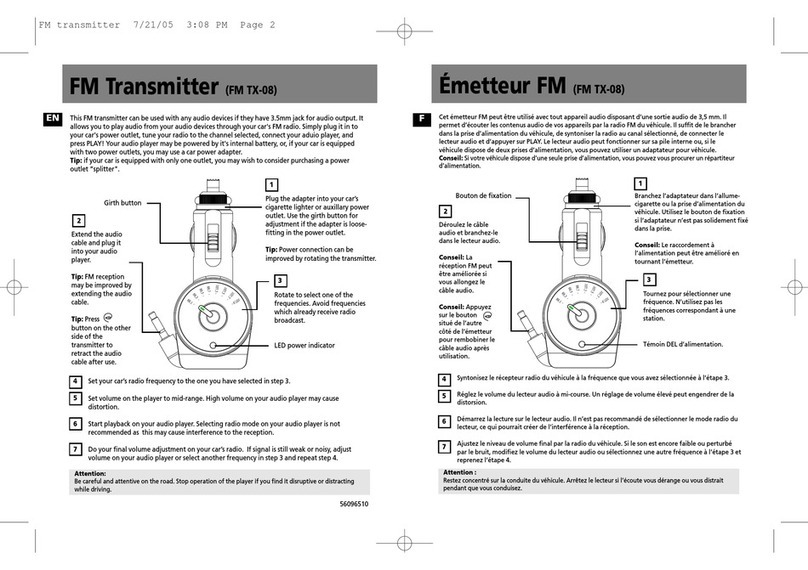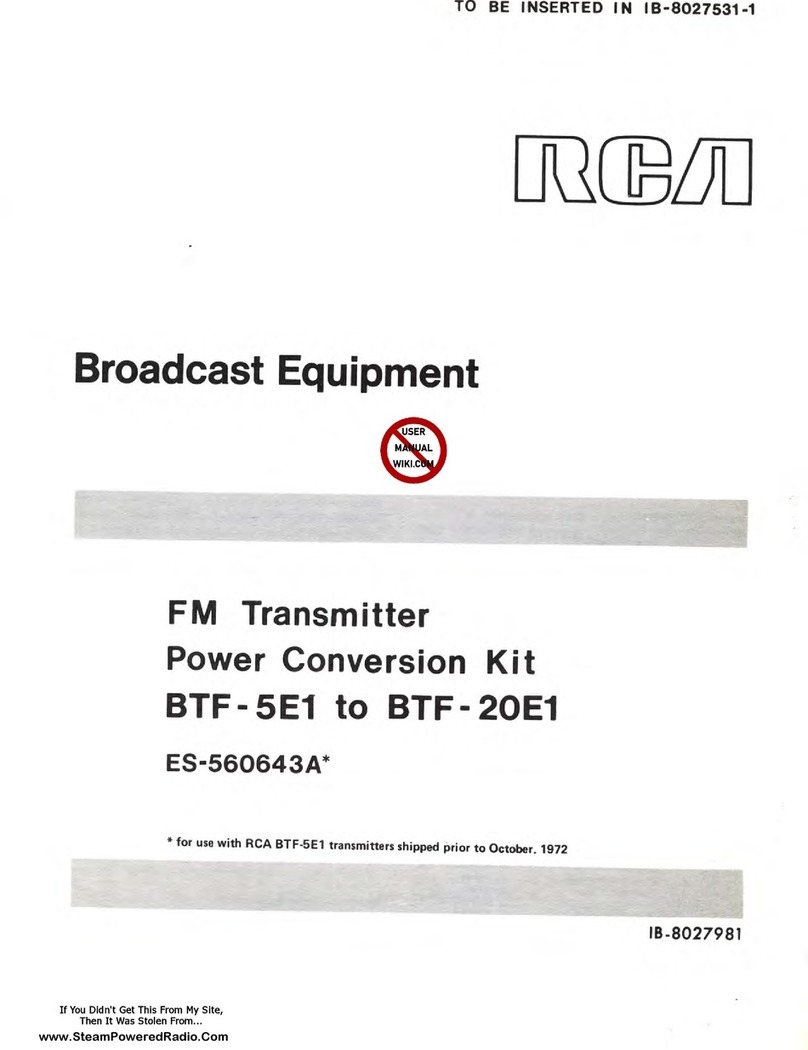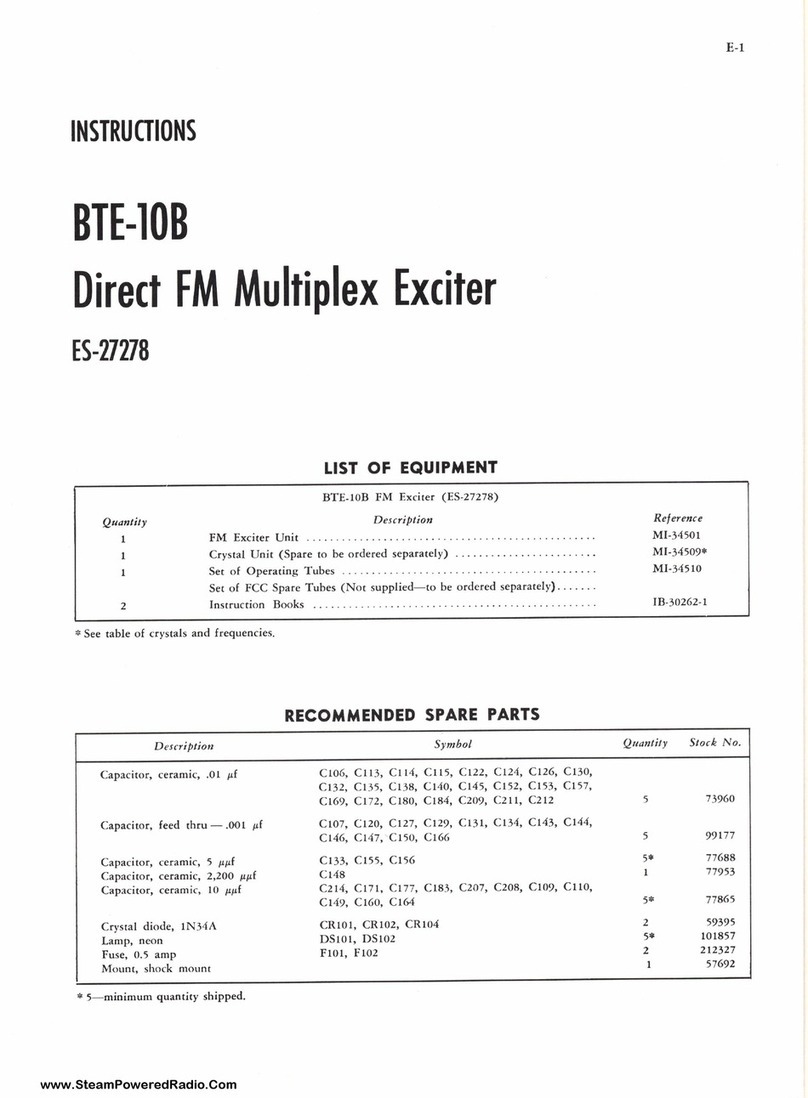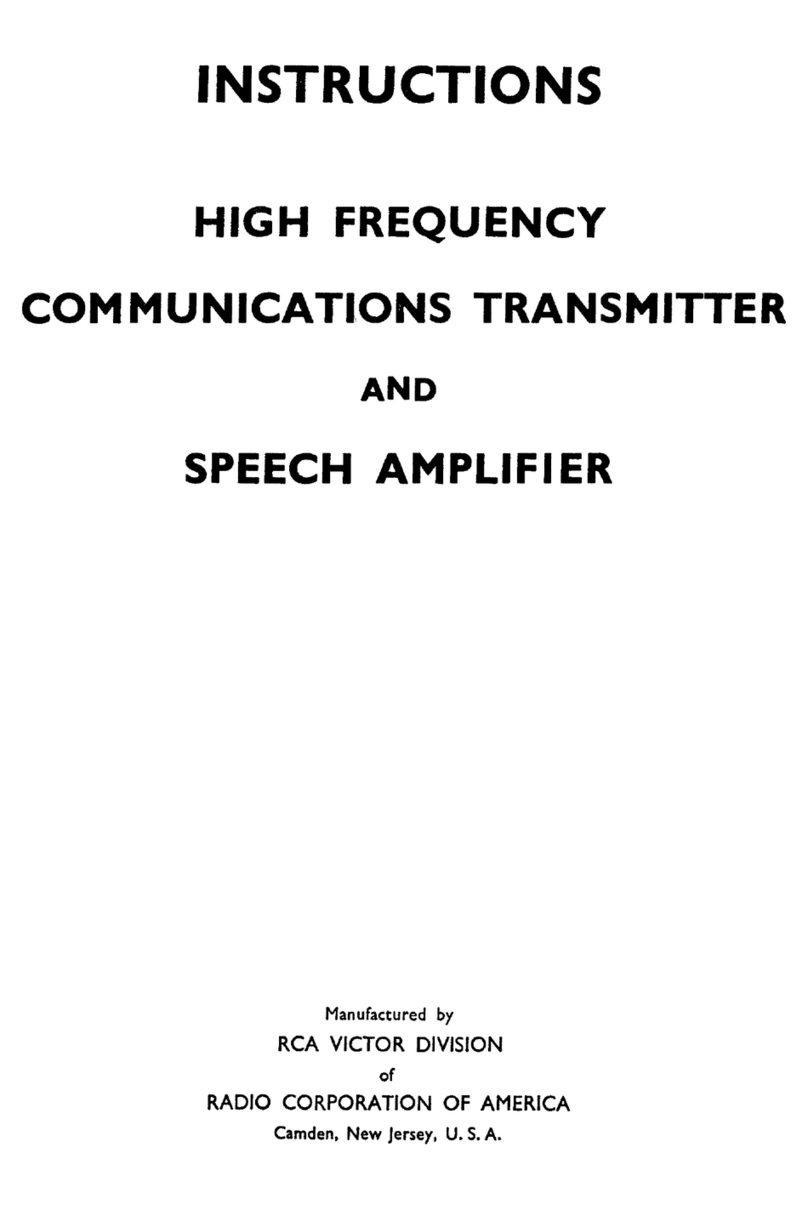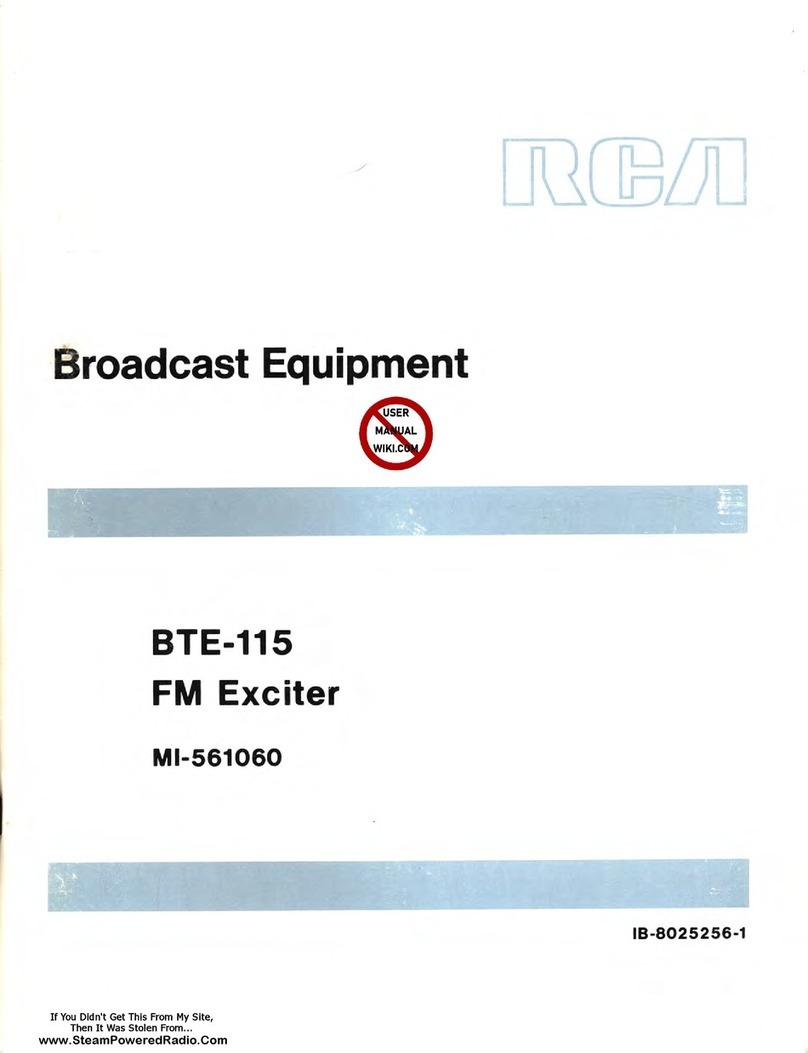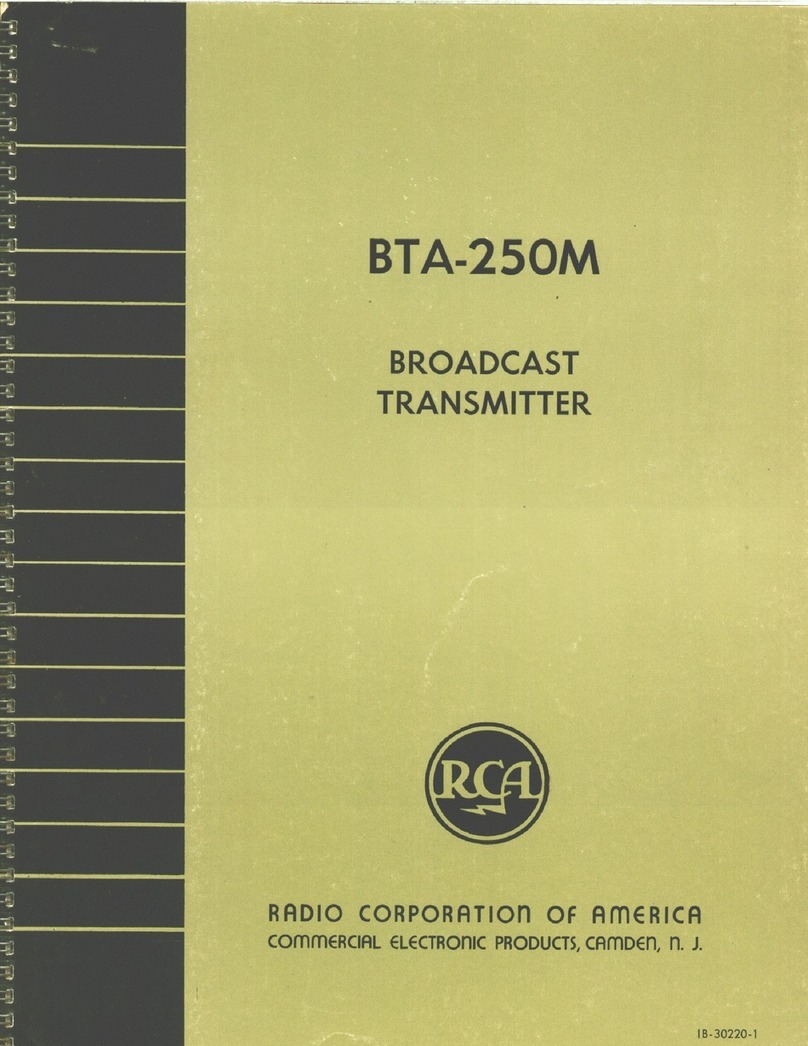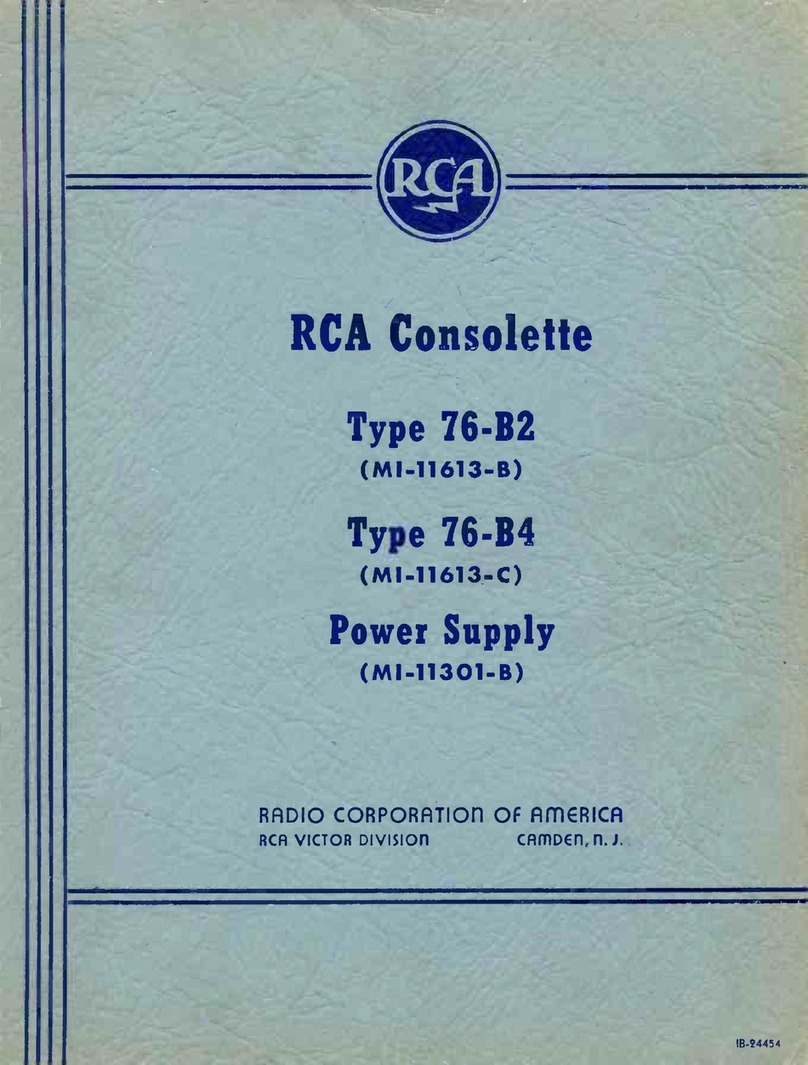
4. LOCATING AND CONNECTING EQUIPMENT
(A) Location Of equipsent. Because of the flexibility of the Type 76-62 Equipment, suggestions
only can be offered in this respect. See Figure 11 "Typical Conduit Layout" on page 16. The
Type 76-82 Consolette, the MI -11301-A Power Supply, the talk -back microphone, and the monitor-
ing loudspeaker are normally located in a control room between the studios, with glass windows
between the control room and studios so that the control operator can observe the action in
the studios. The transcription turntables are usually located in the announce and transcrip-
tion booth, but in certain cases may be located in the control room. The Consolette is nor-
mally located on a desk or table, the power supply being mounted on the wall of the room. The
exact location and layout of the equipment depend on the architectural arrangement of the
station and other conditions of the specific installation.
(B) Wiring To Type 76-B2 Consolette. All external wiring should be connected to the Consolette
through the three terminal blocks on the base of the cabinet and which are available by lift-
ing the chassis. The audio terminal board with solder type terminals is at the right and rear
of the base (when facing from the front), and the two power terminal boards with solder and
screw type terminals are on the left hand side of the base. The audio and power leads should
be kept as far apart as possible at all times.
Refer to Figure 7 "Installation of Type 76-82 Consolette" and Figure 8 "Location of Con-
duit Holes in Type 76-82 Consolette". Four 1-5/8 inch diameter conduit holes are located in
the rear of the Consolette, and four similar holes are located in the base. Referring to the
typical installation in Figure 7, the four flexible conduits run from the base (or rear) of
the Consolette to the Conduit Terminating Box located in the floor (or wall). Four 1-5/8 inch
diameter holes are drilled in a section of the junction box and the conduits terminated to
this section The leads can then be pulled through the other opening in the conduit box.
IMPORTANT: All shielded leads to the Consolette should not be cut at the junction box, but
should be pulled through in a continuous piece to the Consolette.
Connection information is provided by Figure 12 "Conduit List". Figure12 also lists the
lead sizes to be used and the conduits in which the leads should be run. For example: Con-
duit $2 runs from the power box to terminals $21 and $22 of the 76-B2 Power Supply (MI -11301-
A). This circuit is the AC supply and 1 pair of 600 -volt stranded shielded twisted leads is
used.
Care should be exercised when attaching conduits to the rear of the Consolette to avoid
damaging the shielded cables of the Consolette. If necessary, the hold-down clamps may be
loosened and the shielded cables moved slightly in order to facilitate adding the fittings to
the conduits. The clamps should then be replaced.
Refer to Figure 10 and Figure 13. These figures contain information for terminal strap-
ping for 1, 2, or 3 studios. As shipped from the factory, the Consolette is connected for 2
studio operation, and the terminal strapping for these two terminal boards must be changed as
shown in Figures 10 and 13 if 1 or 3 studios are used.
(C) Wiring To Auxiliary Squipsent. All conduits are arranged so that AC power leads are oot run
in the same conduit with audio leads, and that low level audio leads are not run in the same
conduit with high level audio leads or loudspeaker field supply leads. The power for 1, 2,
or 3, 100 -volt, 1.000 -ohm, 10 -watt loudspeaker fields may be obtained from the MI -11301-A
Power Supply. The instructions in the Power Supply Instruction Book should be carefully
followed. If other speakers which have different field voltages and power ratings are used,
a separate field supply unit (or units) such as the RCA Type 79-A, or similar, must be pro-
vided.
- 9 -






